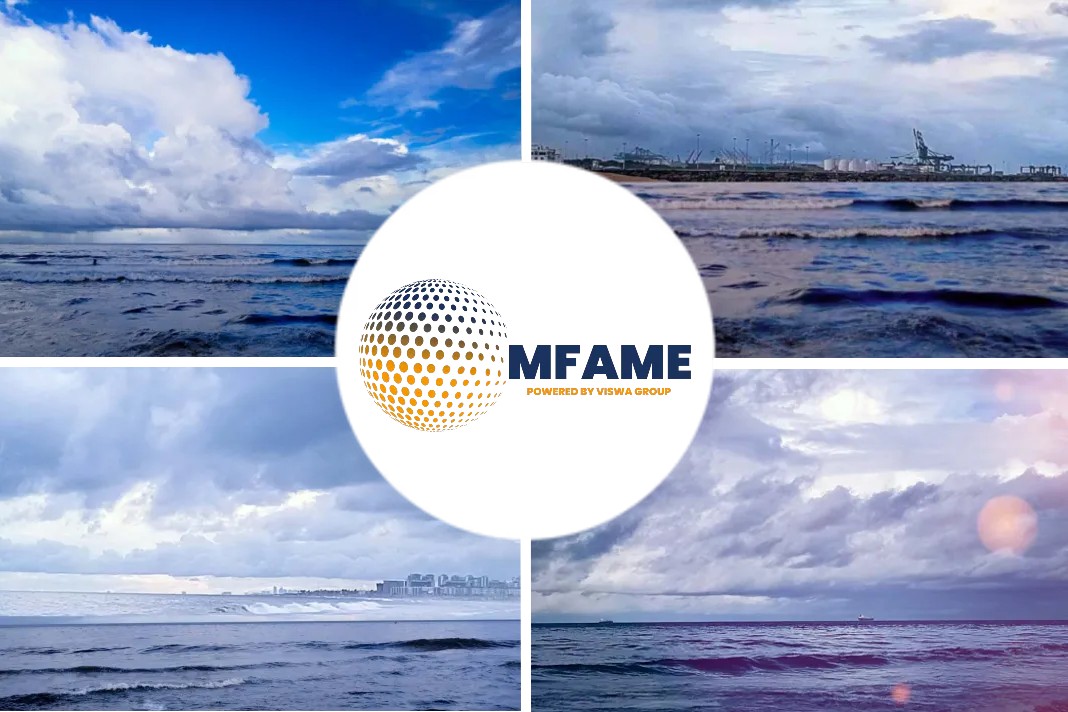
-
Adopting the twin transition can help shipping companies to increase efficiency and reduce their environmental impact.
-
APM Terminals is exploring new technologies to curb carbon in line with the company’s commitment to achieve net zero emissions by 2040.
-
The Twin Transition Playbook is being shared with relevant stakeholders to encourage sector-wide change.
A recent news article published in the Weforum states that sailing towards the twin transition: How shipping can use digital to decarbonize.
Shipping contributes to around 3% of global emissions
Shipping contributes to around 3% of global emissions and is highly energy intensive. As part of wider decarbonization goals, logistics companies are turning towards the twin transition – the aligned acceleration of digital and sustainability agendas.
The Twin Transition Playbook brings digital and sustainability together through two central strategies – ‘greening of IT’ and ‘greening by IT’.
Greening of IT reduces the energy consumption and environmental footprint of data centres, assets, infrastructures, and devices, while greening by IT uses data to drive improvement in other business areas.
But with so many possible routes, where can the shipping industry begin?
Setting out towards sustainability
Working towards sustainability in shipping and logistics may feel like trying to make dinosaurs dance, but multiple examples demonstrate the opportunities that the twin transition can bring.
Industry leaders are adopting a wave of initiatives, including automation, GPS tracking, integrated logistics, and remote digital access solutions to benefit customers and provide better sustainability outcomes.
This can, for instance, help monitor the chemical levels and temperature of shipments, avoiding spoilage and waste.
The World Health Organization (WHO) estimates that up to half of all vaccines are wasted each year due to a lack of temperature control at final storage sites.
And technology such as Star Connect, a monitoring system used on APM Terminals vessels, provides visibility of and real-time data on engine and route efficiency, helping to reduce carbon emissions and improve shipment speeds.
APM Terminals is part of A.P. Moller-Maersk and operates one of the world’s most comprehensive port networks.
As well as improving environmental credentials, digitisation encourages frictionless trade by removing barriers and addressing key issues. With customers now demanding carbon accounting on their invoices, Maersk is also able to provide customers with exact information on CO2 emissions for every container on their vessels.
Selecting the most impactful opportunities
The Twin Transition Playbook guides the creation of a twin transition roadmap through three phases. In phase one and two, organizations set their ambition and priorities. Data is vital – you can’t change what you can’t measure.
In phase three, organizations prepare for implementation by assigning responsibilities and validating feasibility.
In line with phase one, companies can consider environmental footprint as part of the wider criteria used to assess and prioritise new projects – such as capital expenditure – and embed similar environmental criteria within operational expenditure.
This is ‘green OpEx’, a new term for the twin transition that highlights the relationship between greener and more efficient operations. Industry priorities include fuel and energy use in vessels, and energy use in ports and warehouses.
Phase two of the playbook guides organizations to build out their roadmap with priority opportunities. This includes considering external use cases and internal ideas to uncover new priorities along the way.
After identifying opportunities, organizations prioritise them by understanding the impact of their current digital asset portfolio.
The key is to target the biggest opportunities for maximum impact – an approach that Maersk used to optimise fuel consumptions on their vessels while lowering emissions.
As most terminal infrastructure is based on diesel and manual operations, highly impactful actions include exploring new types of clean electricity, shifting from diesel machines to electrification, and transitioning to renewable fuels such as sustainable biofuel from cooking oil.
Activating ecosystems
As set out in the playbook, it’s crucial to activate business ecosystems to build buy-in. Successful interaction relies on a clearly defined purpose that people can connect to, and leaders who drive the purpose internally and externally.
Embedded decarbonization and sustainability teams ensure internal people are on board, and helps to identify key individuals for specific tasks. External stakeholders can smooth out sticking points and help to reach goals faster.
As per carbon reporting requirements, organisations must measure and share their direct scope one and two emissions, and also suppliers’ emissions through scope three. Working with partners to create more digitally enabled, sustainable ecosystems is a win-win for everyone.
For example, APM is working with business partners from the IT sector to reduce energy consumption and decarbonize terminal operations.
Ecosystems also present an opportunity to feed into government goals and policies, and drive environmental impact across the port ecosystem.
In Aqaba, for example, APM is exploring not only how the terminal can become a hub for next generation fuels and zero carbon logistics, but also how to positively impact society.
Making significant and sustained change means looking at the whole piece – at vessels, facilities, infrastructures, operations, and at inland means of transport such as rail or trucks.
It also means getting key stakeholders at the table, like the Digital Container Shipping Association.
There is also a heavy onus on policymakers around the globe to open up the way for progress and digitisation of the sector.
There have been some interesting initiatives in this regard, such as the iconet project, which aims to connect European supply chains following the Physical Internet (PI) concept.
However, this project ended in 2021 and no tangible progress has been seen since then.
Steering sector-wide change
Sustainability can go hand-in-hand with optimisation, finding breakthrough solutions that spearhead sector shifts.
For example, the next generation of vessels will feature different types of energy recovery processes, cutting fuel use and related emissions.
Digital metrics will make it possible to unpick port-to-port efficiency. E-trucking is another example of where sustainability and business optimisation can go hand in hand.
Did you subscribe to our newsletter?
It’s free! Click here to subscribe!
Source: We Forum





















